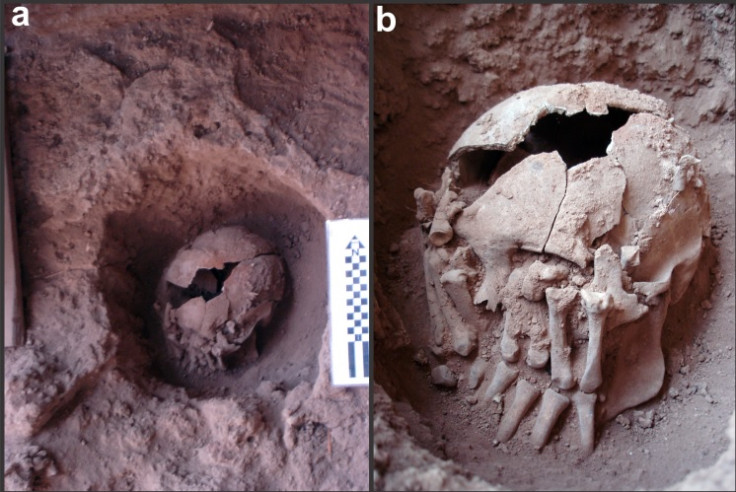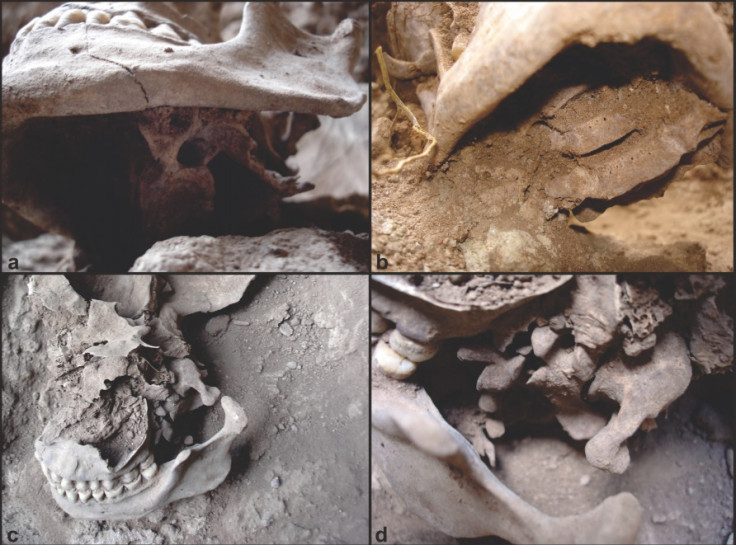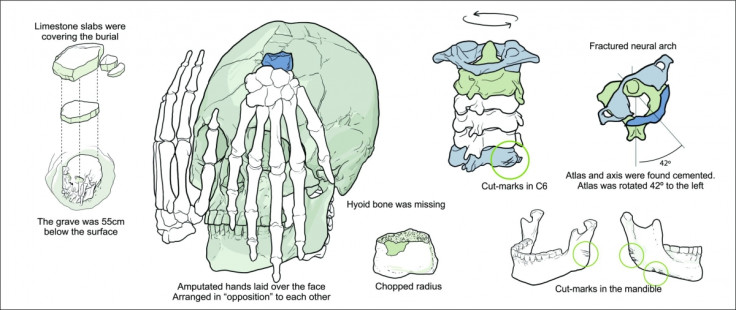Brazil: 9,000-year old ritually decapitated skull unearthed

Archaeologists have unearthed what they believe could be the oldest case of decapitation in the New World. A 9,000-year-old human skull, along with a jaw, the first six cervical vertebrae, and two severed hands were discovered in the rock shelter of Lapa do Santo in Brazil.
The area shows signs of human occupation dating back some 12,000 years, according to the report published in PLOS One and led by André Strauss of the Max Planck Institute for Evolutionary Anthropology, Germany. The discovery of what has been dubbed Burial 26 was first made in 2007 and the contents of it, where the hands were laid over the face, suggest that it was a ritualistic decapitation, rather than a trophy.

"We suggest a ritualised decapitation instead of trophy-taking, testifying for the sophistication of mortuary rituals among hunter-gatherers in the Americas during the early Archaic period," they wrote. "In the apparent absence of wealth goods or elaborated architecture, Lapa do Santo's inhabitants seemed to use the human body to express their cosmological principles regarding death."

The researchers believe that Burial 26 was a member of the group. They added: "The authors think this may be the oldest case of decapitation found in the New Word, leading to a re-evaluation of the previous interpretations of this practice, particularly with regards to its origins and geographic dispersion."
© Copyright IBTimes 2025. All rights reserved.






















